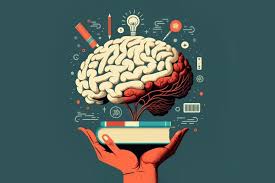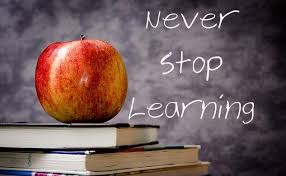Critical reading
Section outline
-
Reading is a foundational skill that plays a crucial role in learning, communication, and personal development
-It involves decoding symbols (letters and words) to derive meaning, comprehend text, and interpret ideas or information
-Reading is not just about recognizing words; it also requires understanding, critical thinking, and the ability to make connections between what is read and prior knowledge or experiences
Critical reading is a form of language analysis that does not take the given text at face value, but involves a deeper examination of the claims put forth as well as the supporting points and possible counterarguments. The ability to reinterpret and reconstruct for improved clarity and readability is also a component of critical reading. The identification of possible ambiguities and flaws in the author's reasoning, in addition to the ability to address them comprehensively, are essential to this process. Critical reading, much like academic writing, requires the linkage of evidential points to corresponding arguments.
-
Reading is important because of the following reasons:

1. Cognitive Development: Reading stimulates the brain, enhancing memory, concentration, and analytical skills.

2. Communication: It allows for better written and spoken communication, as reading exposes people to a variety of expressions, sentence structures, and ideas.

3. Lifelong Learning: Reading equips individuals to continuously learn, explore new subjects, and stay informed about the world.

4. Empathy and Understanding: Through reading, especially fiction, individuals can experience diverse perspectives and cultures, enhancing empathy and global awareness.
-
It is very important to know the key features of reading. These are as follows:
Decoding: translate written words into sounds, recognition of familiar words automatically
Comprehension: understanding meaning of words and sentences, grasping the literal meaning and infer deeper meanings, understand context, and interpret the text’s purpose
Fluency: reading the text smoothly and accurately with proper expression. Fluency allows the reader to focus on meaning rather than just the words themselves
Vocabulary: as readers encounter new words, they build their language skills, improving their ability to grasp more complex material
Critical Thinking: the ability to analyze, evaluate, and question the information presented - crucial for navigating real-world information, such as news articles or scientific reports
Engagement and Interpretation: interacting with the text—asking questions, making predictions, visualizing scenarios, and relating it to personal experiences. This makes the reading experience richer and more meaningful
-
Opened: Friday, 15 November 2024, 12:00 AMDue: Wednesday, 20 November 2024, 12:00 AM
-
-
·
R Following are the key aspects of critical reading that every critical reader needs to understand:
R 1. Readers create meaning from every text through close reading
· Reading is not supposed to be a passive skill of just taking information from the text and producing it as it is.
· When we read, we ‘consume’ texts, when we write, we ‘produce texts’
· When we produce texts, reading becomes an active and energetic process of making new meaning and new knowledge
· Critical readers interact with the texts they read through carefully listening, writing, conversing and questioning – working hard in order to create such meaning.
· Critical reading allows readers to create new ideas from what is read to become independent and creative learners
· Every one reads – in one way or another (information, knowledge, pleasure, leisure etc.)
· Good writing is usually based or influenced by ideas, theories and stories that come from reading
· Writers who do not read have little to say to others
· Critical reading is a collaboration between the reader and the writer – allowing for the construction of meaning of every text that is read
· Critical readers do not read alone and in silence – meaning they take notes and write about what they read. They also discuss the texts with others and compare ideas and interpretations
· Reading for information and trying to extract the main points OR reading in silence without exchanging ideas with others does not mean that one is talking back to the text and questioning it nor extending one’s knowledge
· Critical readers are not made overnight (takes a lot of practice and patience
2. 2. Critical readers interact with the texts they read by questioning them, responding to them, and expanding them, usually through writing
· Critical reading is a two-way process between the text and the reader (talking to the text, questioning every factor idea, expanding in writing by adding own personal understanding and experiences)
· Text present ideas, not absolute truths. No text, no matter how well written and authoritative can have a pre-determined meaning. We must question the authority of the printed page. Years of schooling have made us believe that on-paper text present absolute truths
· Not even the best researched and written definitive text is absolutely complete and finished. These are always subjected to questioning and interpretations with the passage of time.
· The way we believe or disbelieve certain texts clearly varies from one individual to the text. Critical readers understand that the same text will have different meanings for different people. This is acceptable for it reflects features of a strong, engaging and enjoyable reading process
· Reading and interpreting texts as well as sharing one’s views with others are rhetorical acts. To either persuade or be persuaded
· Critical readers know the difference between reacting and responding to a text
· Reacting is done in an emotional mode, rather than at the intellectual level. It is quick and shallow
· Responding to a text requires a careful study on the ideas presented and arguments advanced in it and not just simply accept or reject it after the first reading
· Critiquing a text however does not mean to criticize but to analyze it in a logical and objective manner.
· It is only when one engages in such a dialogue with the text that one can expand it in writing
3. To create meaning, critical readers use a variety of approaches, strategies, and techniques which also include the application of their personal experiences and existing knowledge to the reading process
· Critical reading strategies can be as follows:
--Underline words, sentences, key arguments and passages that stand out
--Take notes on the margins or attach post it notes along with the text (this is the stage of active reading and deriving meaning). Writing extended responses about what is read is the best way to make sense of it. This means continuing the important work of critical reading
--In the comments, ask questions, agree/disagree with the author, question the text, offer counter arguments and examples, mention personal experiences
--Critical readers are often encouraged to write exploratory (investigative) responses in order to understand the text at a deeper level- to construct the meaning of a difficult text. Again, continuing the important work of critical reading
--Keeping a double entry journal- dividing a page into 2 columns – interesting, important words, sentences, quotations and passages from the text on one side and reactions and responses to them on another side
--Critical readers can use their reading and responses to start their own writing projects – searching for possible topics and ideas based on one’s own as well as others responses
-- Critical readers do not give up easily when certain texts are complicated – these texts are worth pursuing and investigation because they present the most interesting ideas.
4. Critical readers actively refer to other texts, related to the topic of their investigation
· Active readers look for connections between texts
· Critical readers and researchers understand that it is not enough to look at a research question from a narrow perspective.
· Active readers and researchers will always expand their local investigative contexts by seeking out related texts and other sources which would definitely broaden their understanding and study, allowing them to see the bigger picture
-
Quiz on Critical ReadingOpened: Wednesday, 20 November 2024, 3:14 PMCloses: Sunday, 24 November 2024, 3:14 PM